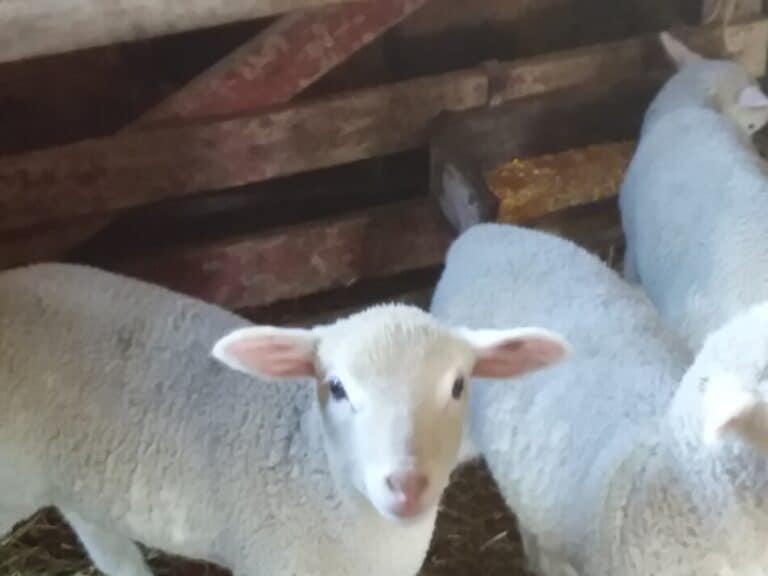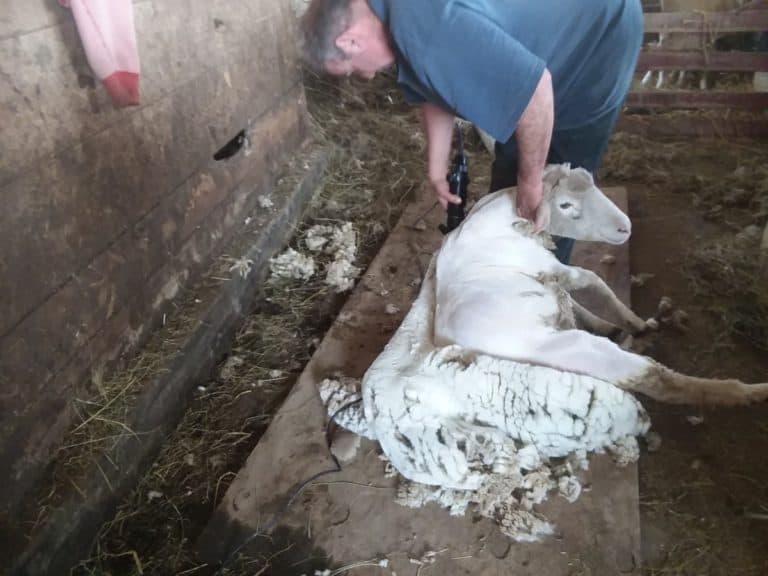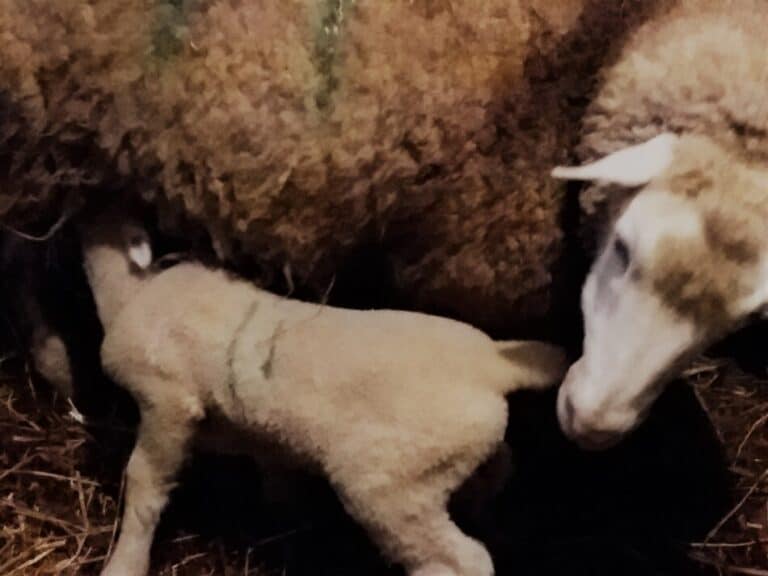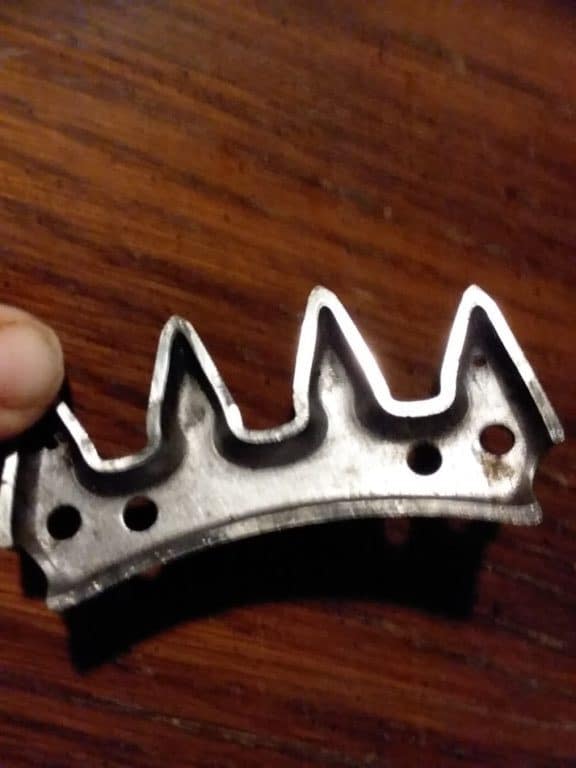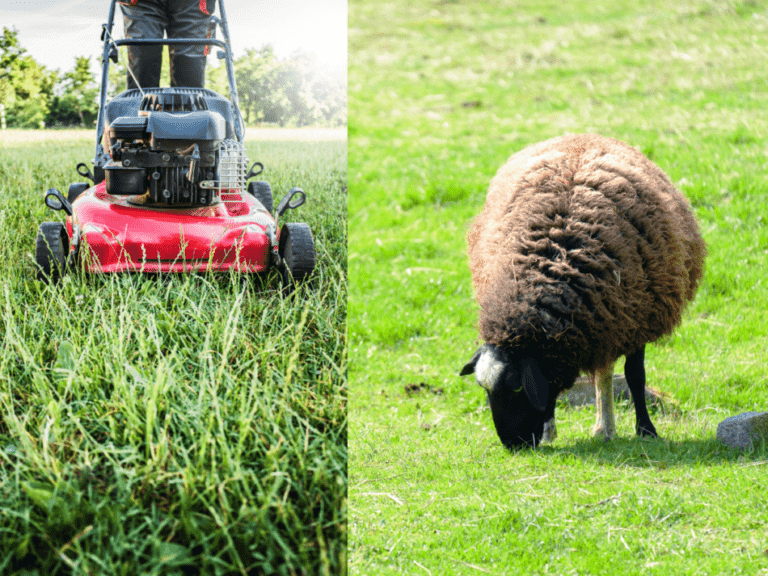Small Acreage Or Backyard Sheep: Will It Work For You?
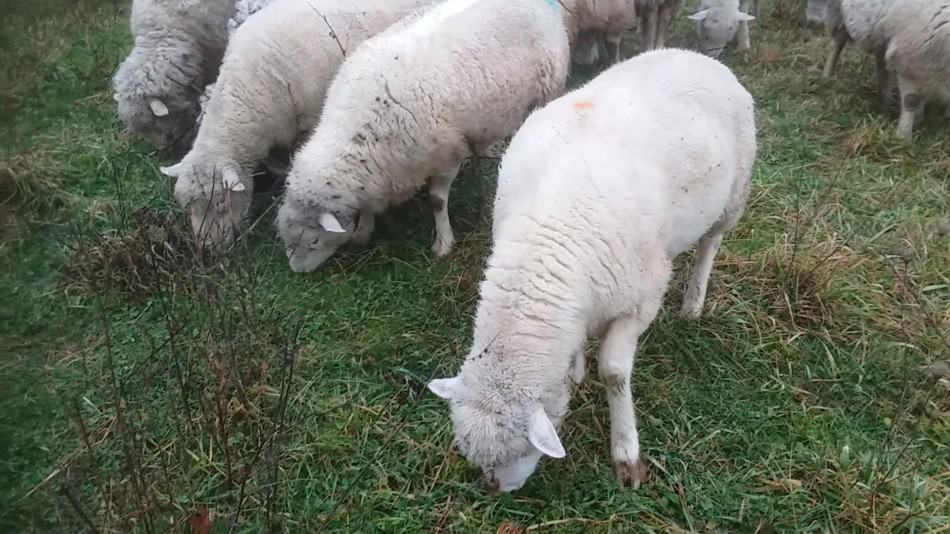
How many sheep can you raise in your backyard or smaller sized pasture? Can sheep be happy as lawn mowers and how do you get them to stay on your place, anyway?
Sheep are an ideal small acreage or backyard animal to raise, since they are able to get all of their food from grass and are easy to fence.
Welcome to the world of sheep raising! It’s full options, none requiring huge amounts of land!
One of the first things I always tell people is that if you have a riding lawn mower, you have space for some animals in your yard.
If you use a push mower and are done in a few minutes, you might need to be thinking poultry, other than that you’ve got grass to graze!
Pros And Cons Of Raising Sheep goes over the good about sheep and the not so good that we have found out over our years as shepherds.
How many sheep can I have per acre?
If you are looking for some stats, the best place to start is the extension service for your county or the state agronomy guide (if you are interested check out Ohio’s online agronomy guide).
Both of which will have numbers of animals per acre as an estimate. Of course, your specific situation may be more or less sheep, but it gives you a good place to get started.
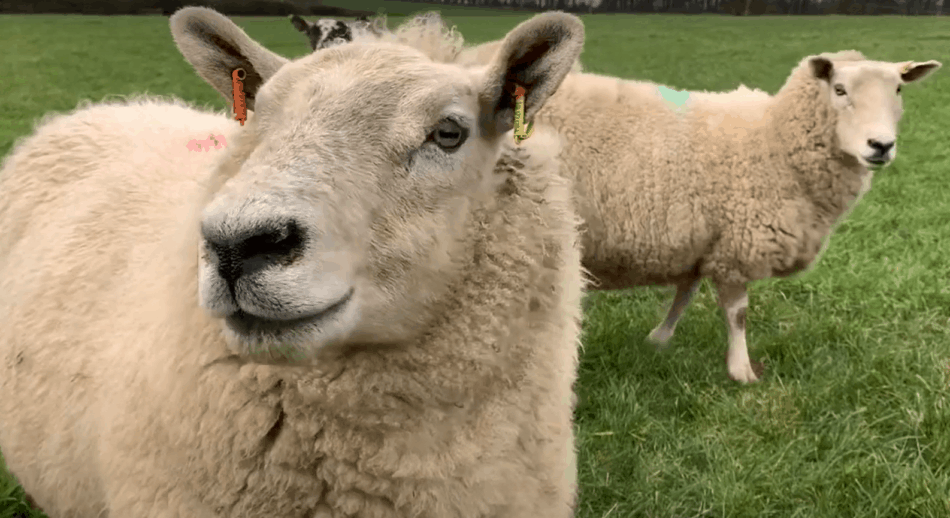
The real world answer here is the more you are willing to do the more animals you can have per acre.
If you rotate the grazing area (see below) and/or are willing to feed supplemental hay you can support more sheep than if you just want to do grass as the primary feed source.
Set stocking the grass, leaving the sheep in the same pasture all year, will give you the least amount of grazing for your flock.
If you have a more brushy or wooded yard read my article Sheep or Goats: Which One Should You Raise.
What if I want more sheep than I have grass for?
First, off what you need is to feed the sheep on your property, they do not necessarily need to get the majority of their ration (daily food intake) off of grass.
If you have enough grass to completely feed your flock, great! If not, let them eat the grass that is available and give them hay for the rest of the year.
Most farmers will fit into this category of feeding supplemental hay, even the bigger farmers.
You can supplement with hay or have hay as your primary feed source and give supplemental time in the yard as a run around explore time.
One thing you could do is make an everyday pen close to the barn where the sheep live and then give them access to sections of the rest of the acreage as weather allows.
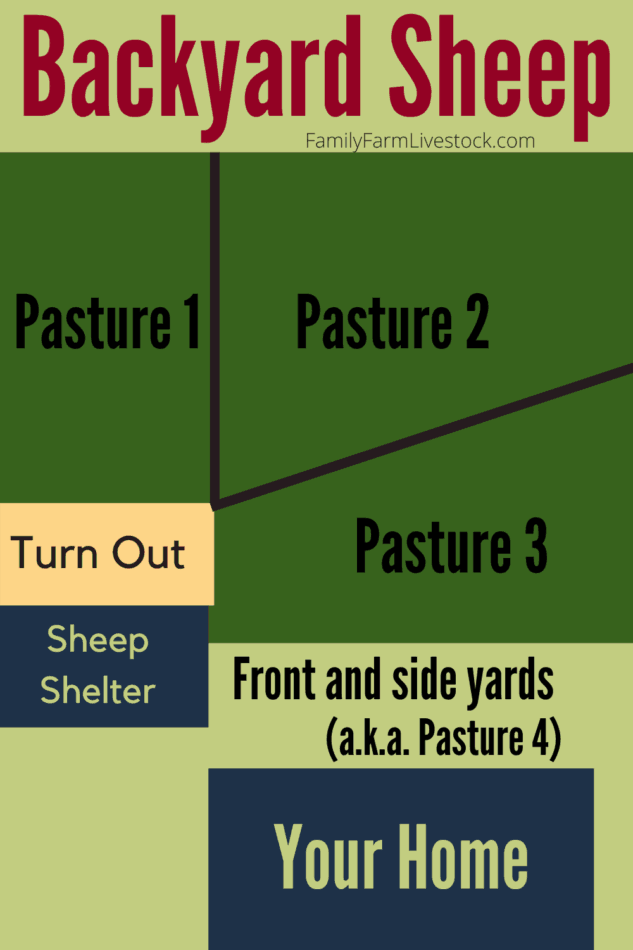
How do I keep the sheep in my yard?
You’ll need some sort of a fence to keep your sheep in your yard or small pasture.
Just because you know where you want them to stay doesn’t mean that they do, or that they will cooperate!
Sheep fence option 1-welded wire
The easiest fence to put up will be a welded wire fence. It is 60 foot long roll of wire that is 4 foot tall and can be supported by T-posts.
Just measure the perimeter of where you want the sheep fence to go and head to town. Most home and garden stores will have this type of fence for gardeners.
We love this stuff and use it for everything, since you can put it up pretty quickly by hand.
Sheep fence option 2-cattle panels
A second option is cattle panels. These are more sturdy and will cost you more to purchase, but will also be able to take more abuse.
Cattle panels will need T-posts to support them, as well.
| Type of fencing | Cost |
| Welded wire, 4 foot tall | $80/100 ft. roll |
| Cattle panels, 4 ft tall 16 ft long | $20/each |
| T-posts, 6 ft long | $7/each |
| Welded Wire Fence (posts every 10 feet) | $1.57/linear ft |
| Cattle Panel Fence (posts every 8 feet*) | $2.12/linear ft |
*Posts every 8 feed on a cattle panel fence might be over doing it, but only putting in posts every 16 feet (at the ends) is under doing it, leaving a potentially floppy fence.
Sheep fence option 3-electric netting
A third option is electric fence, for sheep you’ll need netting.
I know some people keep sheep in with just a single strand of wire, before you get too excited here remember these sheep are trained and the non conformers are sold.
Honestly, I would use one of the other options first and here’s why: cost. I love electric fence, we rely on it daily.
However, for small acreages, just getting started you’ll be better off with a wire fence then up your game to electric later.
There is an exception: if you are positive that you will be rotating the grazing daily, you will need to go with electric netting, just for the sake of portability.
Even with daily moving of the grazing area, I would still want a perimeter fence, so that if the sheep did breach the fence, they would still be on your property.
A final consideration regarding sheep fence-sometimes you are doing more than fencing in sheep, you are keeping out problems, like wandering dogs.
Don’t get me wrong, I love dogs. But that doesn’t make me blind to their inborn abilities.
Unattended dogs looking for something to catch their interest will eventually consider harassing your sheep.
Don’t make your flock an easy target. Have a secure perimeter fence!
ElectroNet 9/12/35 For Sheep is an article I wrote to give you the ins and outs of using electric netting for sheep. This is our main fence that we use for the flock, year round.
Can sheep live on grass alone?
Sheep can live on grass alone, since they are ruminants. The grass needs to be of high quality and provide for all of their nutritional needs.
Raising sheep on grass is the traditional way to feed sheep and the way the vast majority of sheep are still fed today.
To clarify: by “live on grass alone” I mean that sheep do not need to eat grain or other concentrates like pelleted feed.
Sheep can live their entire lives doing just fine on grass and other forages like hay.
Don’t be too literal here and leave out water and minerals! Even though grass is mostly water, sheep still need to have water available.
Some days they won’t drink much, other days they will surprise you. A salt block and loose minerals in a free choice feeder is needed, as well.
How Many Sheep Do You Need? shows you how to calculate out the amount of sheep to have based on the production of your land.
How can I make the grass last longer?
The best way to extend the grazing available to your sheep is to section off the grass.
This means that the sheep can only graze a specific section of the grass, while the rest of the grass is regrowing.
The more sections, the better. This is where the portable electric fencing really shines, it’s so versatile!
Even dividing your acreage in half will increase the grass more than leaving all of it in one section.
The key is to keep the sheep only on the part they are eating now, no walking all over everything and nipping off the regrowth!
Let the grazed off areas rest so it will grow back, then rotate and let the sheep eat it again.
Sheep 101 has a great article on grazing systems for sheep, it’s nice and short with easy to understand graphics.
Does the breed of sheep matter?
The breed of sheep really doesn’t matter as long as they have plenty of grass.
Smaller sheep will need less grass per sheep, larger breeds will need more grass per sheep.
Need a little help with sheep breeds? Check out my article Choosing The Right Sheep Breed For You.
If you want your flock to primarily eat grass, get your sheep from a flock that is grass based.
Sheep that are used to being fed grain, will need some time to adjust to the dietary changes. Sadly, not all sheep will adjust well.
You will be better off to get sheep that are already used to the management you plan to be using.
8 Friendliest Breeds Of Sheep gives you a few easy to work with sheep breeds that will be great for nearly anyone.
Best Breeds Of Sheep For Meat is a list of sheep that are known for being all stars of meat production.
Best Breeds Of Sheep For Wool gives you some things to figure out before you get sheep for wool. Specialty fleeces are selling well and are very popular with handcrafters, most other wool is not.
Will my sheep need a barn?
Not necessarily a barn, but your sheep will need some sort of a shelter. It can be a mini barn/yard barn, a three sided shed or a shelter made of pallets and a roof.
I’ve also seen people use a cattle panel bent like an arch with a tarp stretched across it as a shelter, for the sheep or for supplies like hay and straw. The arch is kept in place with stakes or T-posts.
You have a ton of options, just keep in mind it needs to be well ventilated and provide shelter from the sun and wind.
For your sake, the sheep shelter/barn should be easy for you to get to for winter feeding and occasional vet care.
